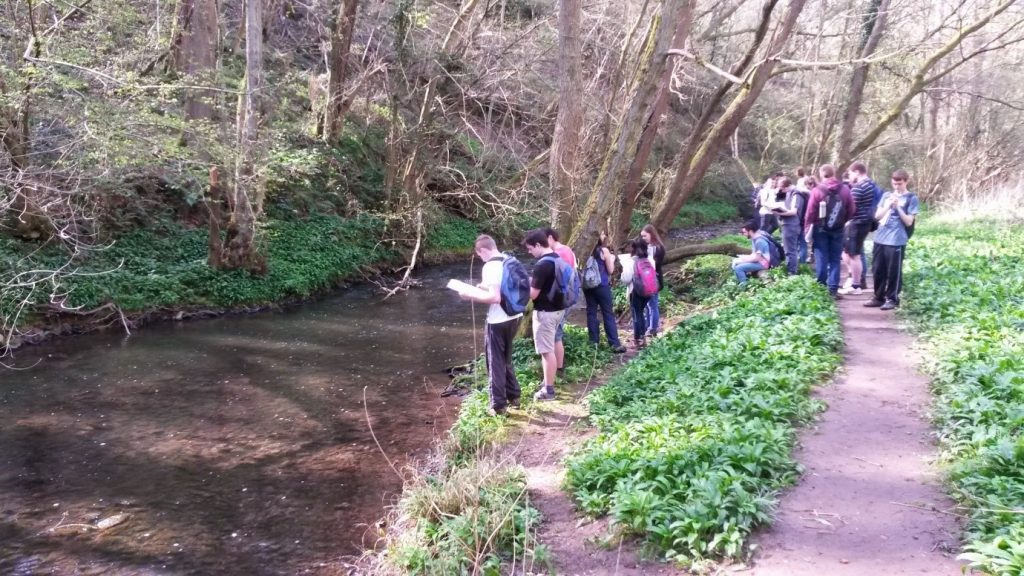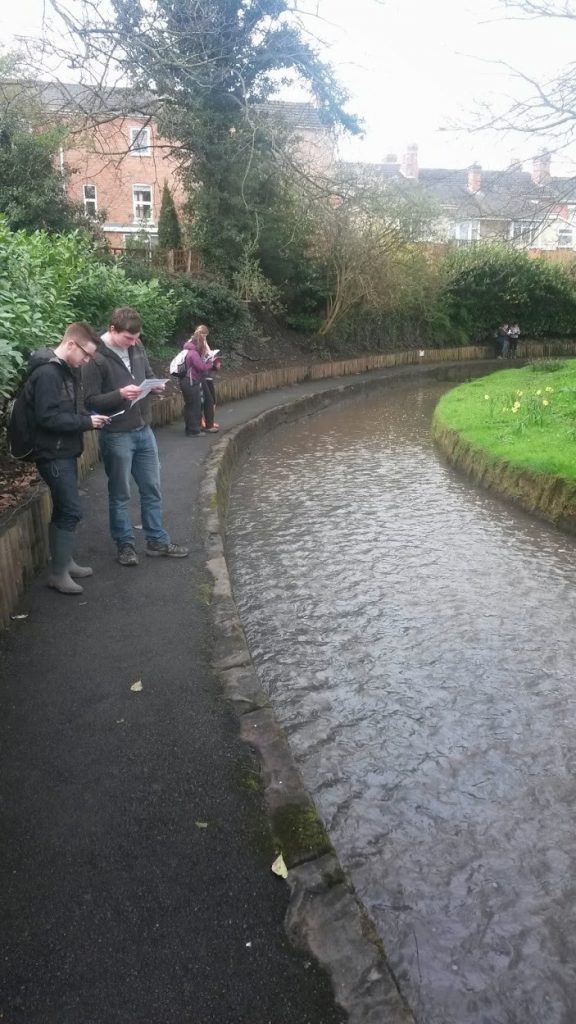by Professor Ian Maddock, University of Worcester, January 2020
Third year undergraduate students at the University of Worcester can take an optional module in River Conservation and Management as part of their Geography or Physical Geography degrees. We offer a practical-based degree programme with a strong emphasis on fieldwork and in this module, the practical work is focused around the use of RHS. The first half of the module is largely classroom-based, focusing on new approaches to environmentally-sensitive river management, including river restoration, natural flood management and the application of environmental flows. Guest speakers from the EA, wildlife trusts, rivers trusts, local authorities and environmental consultancies provide an overview of some of the organisations involved with these topics and give students insights into potential careers relevant to their interests.

RHS provides the focus for the 2nd half of the module. Students are familiarised with the field survey methods and features that are assessed in the classroom and then get to trial the software in a PC room with dummy data sets. This allows them to get used to data input and score calculation and explore the impact of altering input fields and assessing the effect on the metrics calculated. They get a feel for what influences the Habitat Quality Assessment (HQA) and the Habitat Modification Score (HMS) and their sensitivity to data input.

This is followed by three weeks of fieldwork using RHS. The first one involves a ‘practice’ survey of a local stream and then straight back into the computer room for data input and metric calculations. Students work in small groups (2s and 3s) and all assess the same reach. Comparing scores between groups and identifying which features were scored differently between them enables a discussion on observer variability and the need for training to help standardise approaches and optimise data quality. In the following two weeks students assess two contrasting sites. One is a largely natural gravel-bed stream in a local nature reserve, with minimal direct human impact and high habitat quality. The second is a contrasting, heavily-modified urban stream dominated by channelisation including weirs, bank and bed reinforcements and channel realignment. For their assignment, students are required to produce a mock consultancy report and use the RHS outputs to 1) assess the current habitat quality and habitat modification, and 2) make recommendations for the implementation of suitable river restoration techniques. The important thing with the latter is they use the breakdown of the HQA and HMS metrics to underpin their recommendations, explicitly acknowledging the output of the RHS survey results to justify the techniques proposed.
RHS provides an ideal field technique for this type of work for many reasons. Students can become proficient in its use relatively quickly, survey times are sufficiently short to enable them to conduct a survey in a 3-4 hour timetable slot, it promotes a discussion about how to identify river habitat features, what features are deemed ecologically relevant and how the differing importance of features is acknowledged by the differential weighting of them towards the calculated metrics, and how habitats have been impacted in the past or can be restored. It also enables a more general discussion on the use of rapid visual assessment methods as a survey protocol compared to more detailed but time consuming quantitative techniques. We plan to trial the new mobile app this forthcoming year which should provide a more convenient way of recording data in the field and uploading it to the PC-based software.
Professor Ian Maddock
Professor of River Science
University of Worcester
